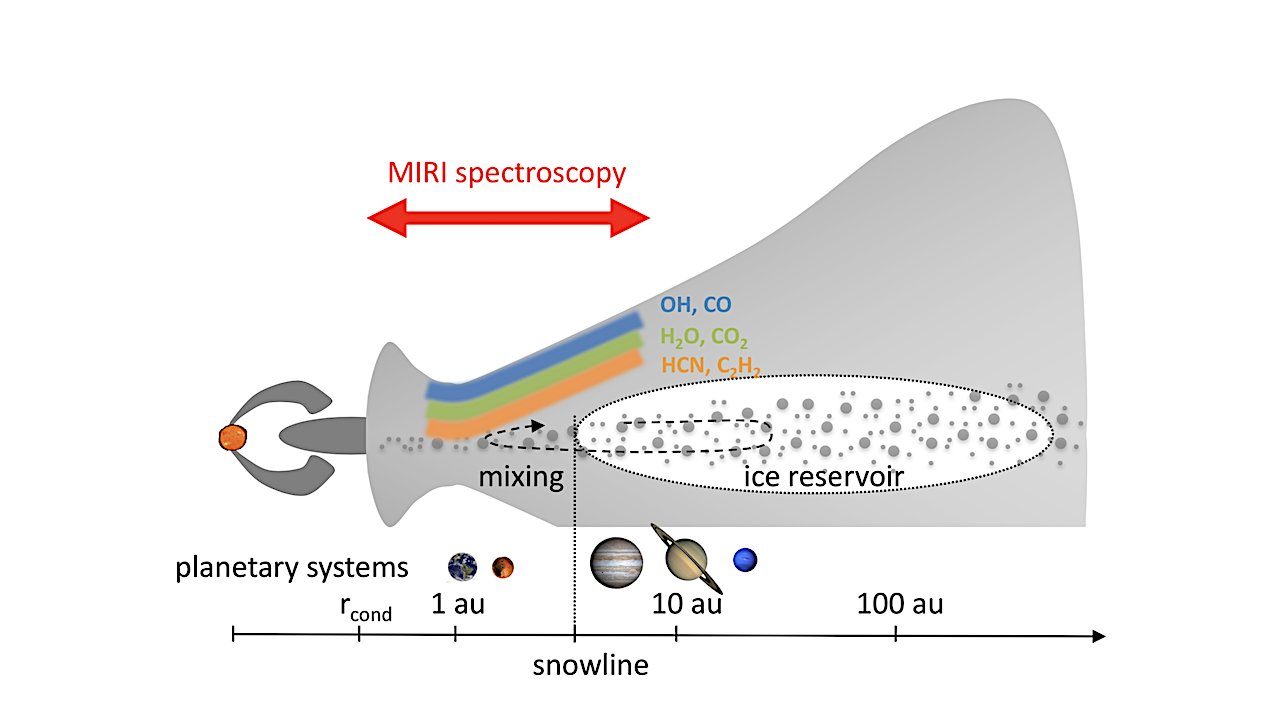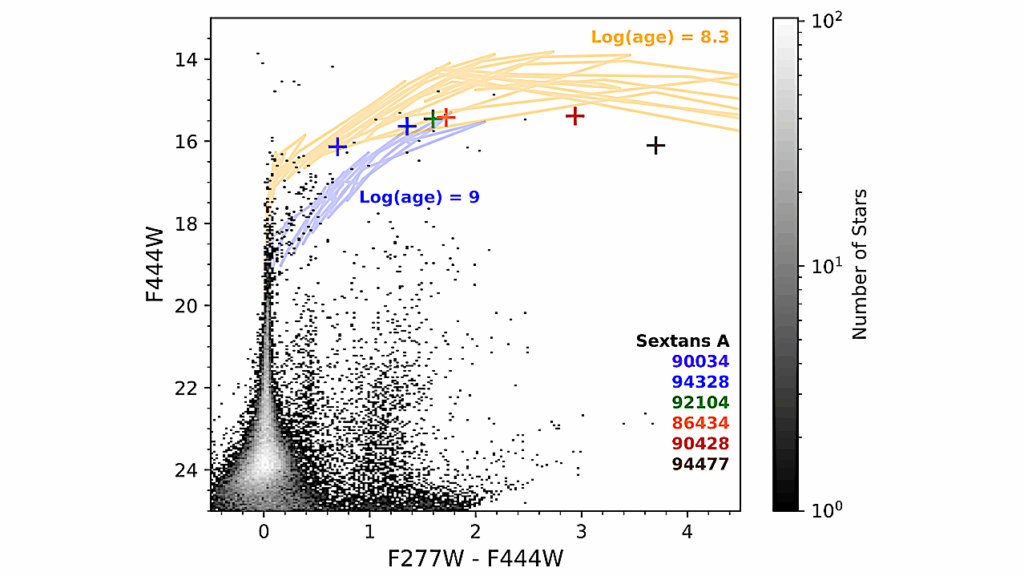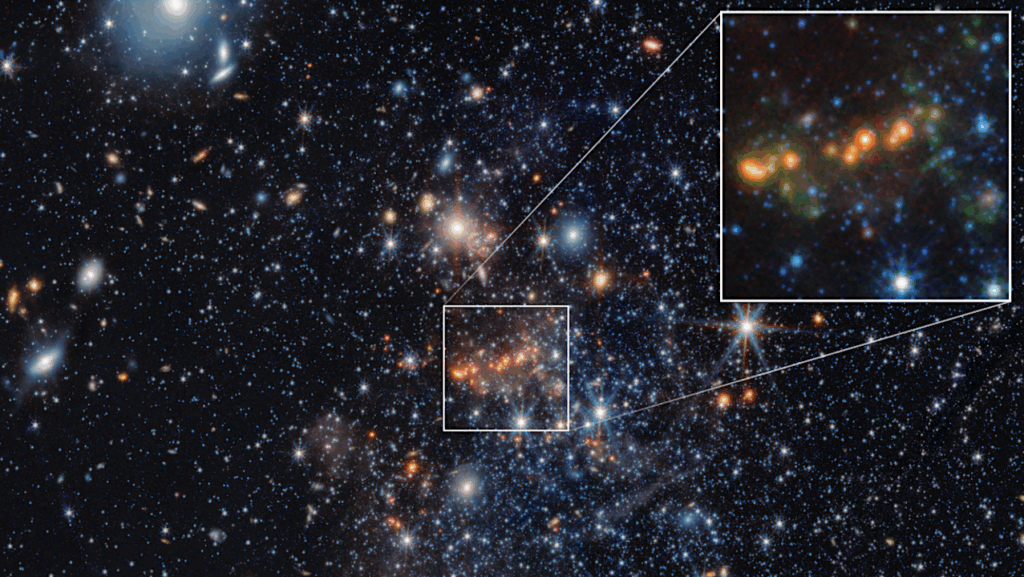The Chemical Inventory of the Inner Regions of Planet-forming Disks — The JWST/MINDS Program

The understanding of planet formation has changed recently, embracing the new idea of pebble accretion. This means that the influx of pebbles from the outer regions of planet-forming disks to their inner zones could determine the composition of planets and their atmospheres.
The understanding of planet formation has changed recently, embracing the new idea of pebble accretion. This means that the influx of pebbles from the outer regions of planet-forming disks to their inner zones could determine the composition of planets and their atmospheres.
The solid and molecular components delivered to the planet-forming region can be best characterized by mid-infrared spectroscopy. With Spitzer low-resolution (R=100, 600) spectroscopy, this approach was limited to the detection of abundant molecules such as H2O, C2H2, HCN and CO2. This contribution will present first results of the MINDS (MIRI mid-IR Disk Survey, PI: Th. Henning) project. Due do the sensitivity and spectral resolution (R~1500-3500) provided by JWST we now have a unique tool to obtain the full inventory of chemistry in the inner disks of solar-types stars and brown dwarfs, including also less abundant hydrocarbons and isotopologues.
The Integral Field Unit (IFU) capabilities enable at the same time spatial studies of the continuum and line emission in extended sources such as debris disks, the flying saucer and also the search for mid-IR signatures of forming planets in systems such as PDS70. These JWST observations are complementary to ALMA and NOEMA observations of the outer disk chemistry; together these datasets provide an integral view of the processes occurring during the planet formation phase.
Inga Kamp, Thomas Henning, Aditya M. Arabhavi, Giulio Bettoni, Valentin Christiaens, Danny Gasman, Sierra L. Grant, Maria Morales-Calderón, Benoît Tabone, Alain Abergel, Olivier Absil, Ioannis Argyriou, David Barrado, Anthony Boccaletti, Jeroen Bouwman, Alessio Caratti o Garatti, Ewine F. van Dishoeck, Vincent Geers, Adrian M. Glauser, Manuel Güdel, Rodrigo Guadarrama, Hyerin Jang, Jayatee Kanwar, Pierre-Olivier Lagage, Fred Lahuis, Michael Mueller, Cyrine Nehmé, Göran Olofsson, Eric Pantin, Nicole Pawellek, Giulia Perotti, Tom P. Ray, Donna Rodgers-Lee, Matthias Samland, Silvia Scheithauer, Jürgen Schreiber, Kamber Schwarz, Milou Temmink, Bart Vandenbussche, Marissa Vlasblom, Christoffel Waelkens, L. B. F. M. Waters, Gillian Wright
Comments: 14 pages, 8 figures, authors version of the manuscript submitted 22.1.2023 for the Faraday Discussion “Astrochemistry at high resolution”, accepted 21.3.2023
Subjects: Earth and Planetary Astrophysics (astro-ph.EP); Solar and Stellar Astrophysics (astro-ph.SR)
Cite as: arXiv:2307.16729 [astro-ph.EP] (or arXiv:2307.16729v1 [astro-ph.EP] for this version)
Related DOI:
https://doi.org/10.1039/D3FD00013C
Focus to learn more
Submission history
From: Inga Kamp Dr.
[v1] Mon, 31 Jul 2023 14:51:52 UTC (2,504 KB)
https://arxiv.org/abs/2307.16729
Astrobiology, Astrochemistry,








